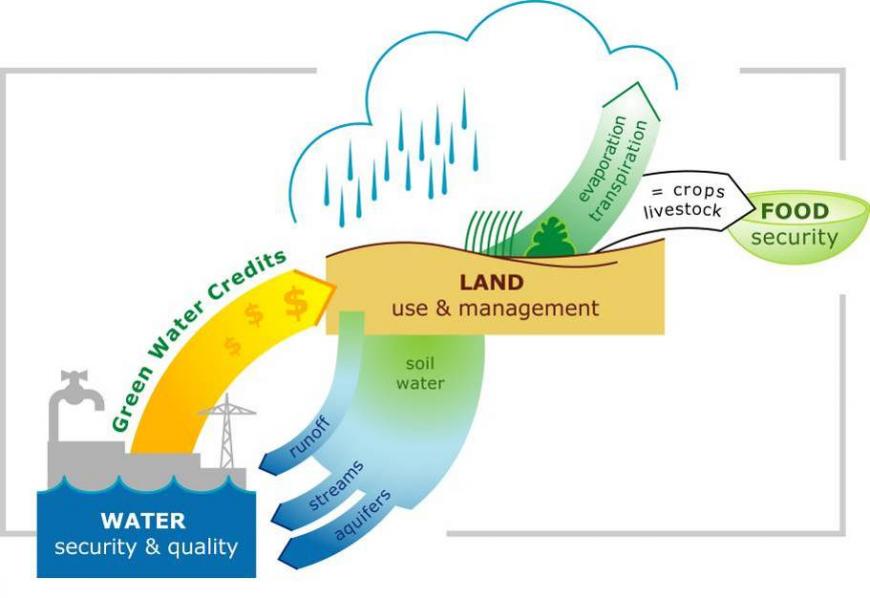Soil and water management
It has been found from the studies on the development of terrestrial ecosystems and its geology evolution that the development and evolution of “soil reservoir” is crucial and driving force to the terrestrial ecosystems’ development and evolution; so long as the “soil reservoir” is maintained properly for its normal development, the eco-environment can be better protected.
1 Soil water can be managed by ‘3R’approach
- Recharge is about optimizing the infiltration of rainfall and runoff water thus improving groundwater recharge and soil moisture replenishment;
- Retention keeps water in the area and slows down the outflow. It helps to make groundwater easily available;
- Retention keeps water in the area and slows down the outflow. It helps to make groundwater easily available;
Many ‘3R’ technologies are available world-wide, e.g.,
Water Harvesting - Guidelines to good Practice
Profit from Storage - the Costs and benefits of Water Buffering
2 WOCAT
WOCAT (World Overview of Conservation Approaches and Technologies) is an established global network of Soil and Water Conservation (SWC) specialists, dedicated to sustainable land management (SLM). The network is to unite the efforts in knowledge management and decision support for up-scaling SLM among all stakeholders including national governmental and non-governmental institutions and international and regional organizations and programmes. The network provides tools that allow SLM specialists to identify fields and needs of action, share their valuable knowledge in land management, that assist them in their search for appropriate SLM technologies and approaches, and that support them in making decisions in the field and at the planning level and in up-scaling identified best practices.
More: https .wocat.net/
3 Green Water Credits
Two-thirds of all fresh water is held in soils as green water, accessible to plants but it is ignored by engineers because they cannot pipe or pump it, by economists because they cannot price it, and by governments because they cannot tax it. Only one tenth of fresh water is blue water - stream flow and groundwater that can be abstracted for general use. The rest is lost as evaporation and storm runoff. Green water management comprises soil and water conservation practices that minimise evaporation losses, control surface runoff and promote groundwater recharge - regulating stream flow to control flooding and optimising the productive use of water by crops.
Green Water Credits (GWC) is a financial mechanism that supports upstream farmers to invest in improved green water management practices. To achieve this, a GWC fund needs to be created by downstream private and public water-use beneficiaries. Initially, public funds may be required to bridge the gap between investments upstream and the realization of the benefits downstream. The concept of GWC, Figure x) has been developed to quantify the reduction of soil erosion and sedimentation and the benefits of environmental protection measures. This information is needed to establish a financial mechanism whereby downstream water users (for instance hydropower, irrigation and water utilities) may pay upstream land managers for improved land and water management. There is a huge potential market for GWM&C projects worldwide. Proof of concept was accomplished in Kenya and is currently applied in Morocco, Algeria, and China; the consortium of ISRIC, FutureWater and Nelen-Schuurmans provides know-how, experience and ownership of the necessary database resources and calculation tools.
